When diving into the world of 2JZ engine builds, one thing quickly becomes clear: the transmission is just as crucial as the engine itself. You can have a powerhouse under the hood, but without the right transmission upgrades, all that potential can feel like it’s slipping through your fingers. Upgrading your 2JZ transmission isn’t just about swapping parts; it’s about fine-tuning the entire drivetrain to handle more power, deliver sharper shifts, and keep everything reliable under pressure.
Think of your transmission as the bridge between your engine’s raw strength and the road. If that bridge isn’t solid, you’ll face frustrating delays, clunky gear changes, or worse — catastrophic failure at the worst possible moment. That’s why enthusiasts who push their 2JZ engines beyond stock limits often start with reinforcing the transmission. From beefier gears to upgraded synchros, each modification plays a role in improving how power flows and how smoothly you shift.
But it’s not just about strength. Precision matters. Ever tried to shift gears in a car that feels vague or sticky? It kills the driving experience. Upgrading your transmission means dialing in that crisp, confident shift feel that makes you want to drive harder, longer, and faster. Whether you’re carving corners or blasting down a straightaway, every shift should feel like a handshake — firm and reliable.
And here’s a little secret: the right transmission upgrades can also improve efficiency. A well-matched setup reduces power loss, meaning more of your engine’s grunt actually reaches the wheels. That’s a win-win — more power and better control. For those who love street driving and track days alike, this balance is gold.
So, what does upgrading the 2JZ transmission involve? It could mean swapping out weak factory components for stronger aftermarket parts, upgrading clutch systems to handle increased torque, or even installing modern transmission coolers to keep things running smoothly under heat. Each step is a layer of protection and performance that ensures your build isn’t just fast, but dependable.
In the end, upgrading your 2JZ transmission is about respect — respect for the power you’ve built and the miles you want to enjoy it. It’s about making sure every shift counts, every gear change feels natural, and every drive leaves you smiling. Because when your transmission works in perfect harmony with your engine, the road becomes your playground.
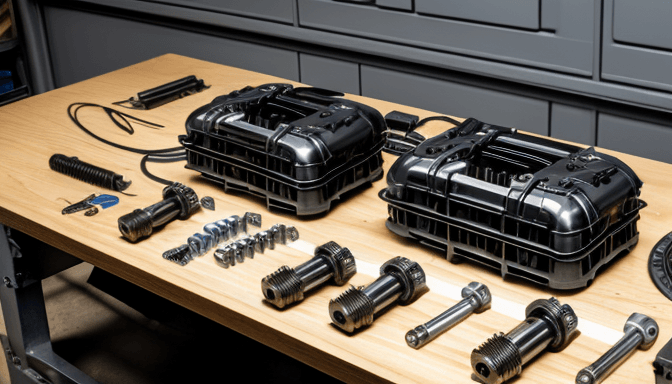
Best Manual Transmission Options for 2JZ Swaps (R154, T56, CD009)
When you’re diving into a 2JZ engine swap, picking the right manual transmission isn’t just a detail—it’s the backbone of your build. You want something that can handle the raw power without feeling like a fragile glass slipper. The three names that pop up most often are the R154, T56, and CD009. Each has its own vibe, strengths, and quirks, so let’s break down what makes them tick and which might suit your project best.
First up, the R154. This transmission is almost like the classic muscle car manual for the 2JZ. It’s a Toyota original, which means bolt-on compatibility is smoother than a fresh wax job. Known for its toughness, the R154 can handle decent power levels without flinching, especially if you’re running a street build or moderate boost. But, heads up: stock R154s can struggle beyond 500 horsepower, so if you’re chasing big numbers, upgrades or a beefier option might be needed.
Next, the T56 is a favorite among those who want a bit more muscle and a slicker shifting experience. Originally from GM muscle cars, the T56 is a 6-speed beast known for its strength and smooth gear changes. It’s a common swap for high-horsepower 2JZ builds because it can handle upwards of 700 horsepower with the right internals. The trade-off? It requires custom mounts and adapters, which means a bit more work—but the payoff is a transmission that feels solid and precise, like a well-tuned sports car.
Then there’s the CD009, a bit of a dark horse in the 2JZ community. This 6-speed transmission from Nissan has been gaining traction because of its lightweight design and strong internals. It’s known for smooth shifts and can handle a surprising amount of power, making it a smart choice for those who want a modern feel without the bulk of older transmissions. The catch? It demands some custom fabrication and a bit of patience to get everything aligned perfectly.
Choosing between these three often boils down to your build goals. Are you aiming for a reliable daily driver with solid power? The R154 might be your buddy. Want a transmission that can take a beating on the track with crisp shifts? The T56 is hard to beat. Looking for a lightweight, modern option with good strength? The CD009 deserves a spot on your shortlist.
| Transmission | Strength | Number of Gears | Compatibility | Ideal Power Range |
|---|---|---|---|---|
| R154 | Strong (up to ~500 HP stock) | 5-speed | Direct bolt-on to 2JZ | Street builds, moderate power |
| T56 | Very strong (up to ~700+ HP with upgrades) | 6-speed | Requires custom adapters/mounts | High power, track-focused |
| CD009 | Strong and lightweight | 6-speed | Custom fabrication needed | Modern builds, balanced power |
In the end, no single transmission rules them all. It’s about matching your engine’s personality with a gearbox that won’t hold it back. Think of it like picking the right shoes for a marathon—you want comfort, durability, and a perfect fit. The same goes here: pick wisely, and your 2JZ swap will feel like a seamless extension of your driving soul.
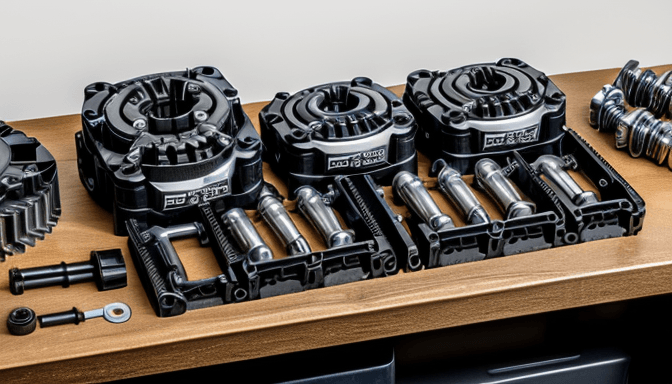
Automatic vs Manual: Which Is Better for Your Build Goals?
Choosing between an automatic and a manual transmission for your 2JZ build isn’t just about preference—it’s about matching the transmission to your driving style and what you want out of your ride. Think of it like picking the right tool for a job. Sure, both can get the work done, but one might make the process smoother or more fun depending on the task.
Manual transmissions give you direct control. You feel every shift, every clutch engagement. It’s like dancing with your car—intimate, precise, and rewarding. But here’s the catch: mastering that dance takes practice. If you’re aiming for a build that’s all about connection and engagement, a manual is often the way to go. Plus, manuals tend to be lighter and simpler mechanically, which can mean fewer headaches down the line.
On the flip side, automatics have come a long way, especially with modern designs like the ZF 8HP. These transmissions offer lightning-fast shifts without you having to lift a finger. For those who want blistering performance on the street or track but prefer a more relaxed driving experience, automatics shine. They’re also excellent for high-horsepower setups where consistent, quick shifts can actually improve your 2JZ’s power delivery.
But here’s a little secret: automatics can be heavier and sometimes less efficient than manuals. They also often require more maintenance, especially if you push them hard. So, if you’re building a high-powered drag car, choosing a robust automatic like the TH400 or Powerglide might be smart. These are built to handle brutal power and deliver quick, reliable shifts under pressure.
Let’s break it down a bit:
| Transmission Type | Pros | Cons | Best For |
|---|---|---|---|
| Manual |
|
| Enthusiasts, street performance, precision shifting |
| Automatic |
|
| Drag racing, street comfort, high-power builds |
At the end of the day, it boils down to what excites you more. Do you want to feel every gear change and be in full control? Or do you want to let the car handle the shifting while you focus on the road and your lines? Both choices have their charm and challenges. Your 2JZ is a beast either way—just make sure the transmission you pick lets it roar exactly how you want.
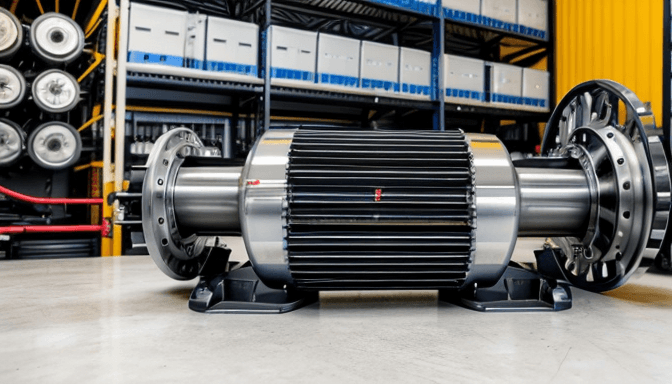
Upgrading to a TH400 or Powerglide for Drag Applications
When it comes to drag racing with a 2JZ engine, the transmission you choose can make or break your run. The TH400 and Powerglide transmissions have earned their stripes in this arena, and for good reason. These transmissions are not just old-school relics; they are proven workhorses built to handle brutal power and deliver lightning-fast shifts that can shave precious fractions off your quarter-mile time.
Think about it: the TH400 is like the heavyweight champion of automatics. It’s known for its rugged durability and ability to handle massive torque without flinching. If you’ve ever watched a drag car launch off the line with that unmistakable aggressive clunk, chances are it’s a TH400 flexing its muscles. It’s simple, stout, and has a reputation for reliability under extreme conditions. That’s why many 2JZ drag builds lean on this transmission to keep things smooth and strong.
On the other hand, the Powerglide is the lightweight sprinter in the world of automatics. With only two forward gears, it might sound basic, but this simplicity is its secret weapon. Fewer gears mean fewer shifts, less chance of failure, and incredibly quick, consistent launches. For drag racers chasing minimal weight and maximum shift speed, the Powerglide is a go-to choice. It’s like the ninja of drag transmissions—small, fast, and deadly efficient.
Both transmissions excel in different ways, but their common thread is durability paired with shift speed. Upgrading to either means you’re prioritizing reliability during those intense drag events where every millisecond counts. Plus, these transmissions can be heavily modified with aftermarket parts like high-stall torque converters and reinforced internals to suit your specific power levels and racing style.
One thing to remember is that these transmissions demand proper setup and maintenance. Without the right cooling system and fluid, even the toughest transmission can overheat and fail. So, if you’re serious about drag racing with your 2JZ, investing in a robust cooling system and quality transmission fluid is just as important as picking the right transmission.
In summary, upgrading to a TH400 or Powerglide for drag applications isn’t just about picking a transmission—it’s about choosing a partner that can handle the brutal power of your 2JZ and deliver fast, consistent shifts when it matters most. Whether you want the brute strength of the TH400 or the nimble precision of the Powerglide, both options offer a path to reliable, high-performance drag racing.
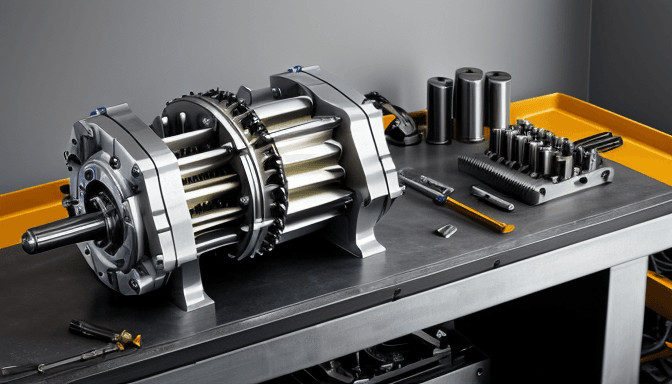
ZF 8HP and Other Modern Auto Swaps for Street and Track
When it comes to modern automatic transmissions for 2JZ swaps, the ZF 8HP stands out as a favorite among enthusiasts. Why? Because it blends smooth, lightning-fast shifts with the ability to handle serious power. Imagine cruising down the street with buttery gear changes, then hitting the track and feeling that instant response without any lag. That’s the kind of versatility the ZF 8HP delivers, making it a top pick for both street and track builds.
But the ZF 8HP isn’t the only player in the game. There are other modern automatics worth considering, especially if you want something tailored to your specific needs. For example, some builders lean toward the GM 8L90 or the Ford 10R80 transmissions. These units share similar traits—quick shifts, durability, and compatibility with high horsepower—but each brings its own flavor in terms of tuning and feel.
One of the biggest perks of these modern autos is their adaptability. Thanks to advanced electronics and software, you can fine-tune shift points, firmness, and even launch control. This means your transmission isn’t just a passive part; it actively enhances your driving experience. It’s like having a co-pilot who knows exactly when to shift for maximum fun and performance.
Now, you might wonder about reliability. After all, high horsepower can be brutal on transmissions. The good news? The ZF 8HP and its modern counterparts are built tough. They feature robust internals and smart cooling solutions to keep things running smooth, even under heavy stress. That said, upgrading the transmission cooler and using the right fluid is a smart move to extend its life, especially if you’re pushing the limits.
Let’s talk about installation. Modern automatic swaps can be a bit of a puzzle. They often require custom adapters, wiring harnesses, and sometimes even new driveshafts. But the payoff is worth it. Once dialed in, you get a transmission that feels like it was made for your 2JZ—responsive, reliable, and ready to tackle anything from daily driving to weekend track sessions.
In short, if you’re aiming for a smooth blend of street comfort and track-ready performance, the ZF 8HP and other modern automatics offer a compelling package. They’re not just transmissions; they’re part of what makes your build truly come alive.
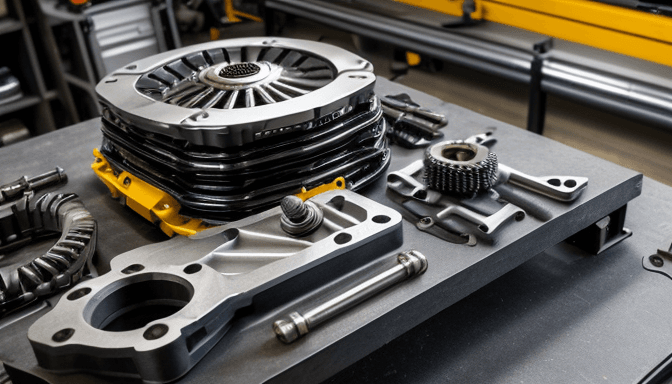
Clutch Kits, Flywheels, and Pedal Assemblies for High HP
When you’re cranking up the horsepower on your 2JZ, the stock clutch setup often just won’t cut it. Think of it like trying to stop a freight train with a bicycle brake—sure, it’s possible, but it’s not going to last long or feel smooth. Upgrading your clutch kit is essential to handle the extra power without slipping or burning out. But it’s not just about strength; it’s about control. A well-chosen clutch kit gives you that perfect bite and feel, making every shift crisp and confidence-inspiring.
Flywheels play a huge role here, too. The right flywheel can dramatically change how your engine responds. Lightweight flywheels offer quicker revs and snappier throttle response, which is fantastic for track days or spirited street driving. On the flip side, heavier flywheels provide smoother engagement and better drivability in stop-and-go traffic. It’s a balancing act, and your choice depends on how you want your 2JZ to behave under your right foot.
Now, don’t overlook the pedal assembly. It might sound minor, but a responsive pedal can be the difference between a smooth launch and a frustrating stall. Upgrading to a performance pedal assembly means better modulation and less fatigue during aggressive driving. Ever tried to feather a clutch with a mushy pedal? It’s like trying to play a piano with mittens on—frustrating and imprecise.
Here’s a quick look at what to consider when upgrading these parts:
- Clutch Kits: Multi-plate clutches for more grip, organic vs. ceramic materials depending on your driving style.
- Flywheels: Lightweight for quick revs, or heavier for smoothness and street comfort.
- Pedal Assemblies: Adjustable pedals for personalized feel and better control.
From personal experience, swapping to a high-performance clutch kit and a lightweight flywheel transformed my 2JZ build. Shifting became sharper, launches felt explosive, and the car just felt alive. It’s like upgrading from a rusty old bike chain to a precision-engineered gear system—the difference is night and day.
In short, if you want your 2JZ to handle serious power without drama, investing in clutch kits, flywheels, and pedal assemblies isn’t optional—it’s a must. These components work together to give you the control, durability, and feel that make every drive a thrill rather than a chore.
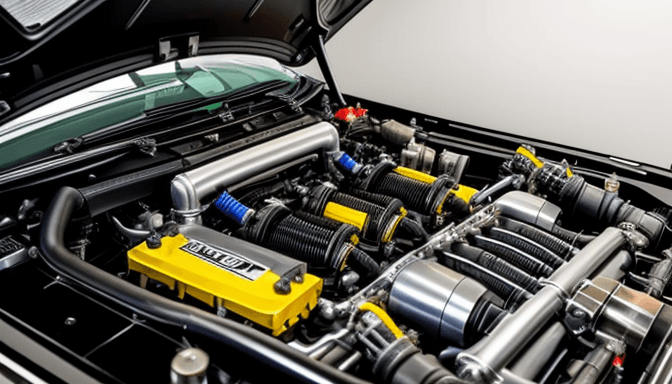
Driveshaft and Mount Considerations in Transmission Swaps
Swapping a transmission in a 2JZ setup isn’t just about dropping in a new gearbox and calling it a day. One of the sneaky challenges that often trips up builders is the driveshaft and mount situation. Think of the driveshaft as the critical link between your engine’s power and the wheels. If it’s off by even a little, you’ll feel it through vibrations, noise, or worse—damage down the line.
First off, driveshaft length is king. When you swap transmissions, the output shaft position changes, which means your old driveshaft might be too long or too short. Running a driveshaft that’s not the right length can cause it to bind or slip out, leading to catastrophic failure. It’s like wearing shoes two sizes too small—uncomfortable and damaging. Custom driveshafts or carefully measured modifications often become necessary to get that perfect fit.
But length isn’t the only factor. Balance plays a huge role too. A driveshaft spinning at thousands of RPMs must be perfectly balanced to avoid vibrations that can wear out bearings and mounts prematurely. If you’ve ever felt your car shake at certain speeds, a poorly balanced driveshaft might be the culprit. Ensuring a professional balance after any modification is a must.
Mount compatibility is another piece of the puzzle. Different transmissions come with varied mounting points and shapes. That means your existing transmission crossmember or mounts might not line up correctly. Ignoring this can cause stress on the transmission case and frame, leading to cracks or misalignment. Sometimes, fabricating custom mounts or using adapter kits becomes the best way to ensure everything sits snug and secure.
Here’s a quick rundown of what to keep in mind:
- Measure twice, cut once: Always double-check driveshaft length after the swap.
- Balance is non-negotiable: Get your driveshaft professionally balanced to avoid vibrations.
- Mounts matter: Don’t force mismatched mounts; custom solutions often save headaches later.
- Material choice: Opt for quality materials in driveshafts and mounts to handle the 2JZ’s power.
In my own experience swapping a T56 into a 2JZ chassis, I learned the hard way that ignoring driveshaft balance led to a shaky, nerve-racking ride. After investing in a custom balanced driveshaft and proper mounts, the difference was night and day. Smooth shifts, no vibrations, and peace of mind—exactly what you want when pushing your build hard.
Bottom line? Don’t overlook the driveshaft and mounts. They’re the unsung heroes that keep your power flowing smoothly and your build reliable. Treat them with the attention they deserve, and your 2JZ swap will thank you every time you hit the gas.
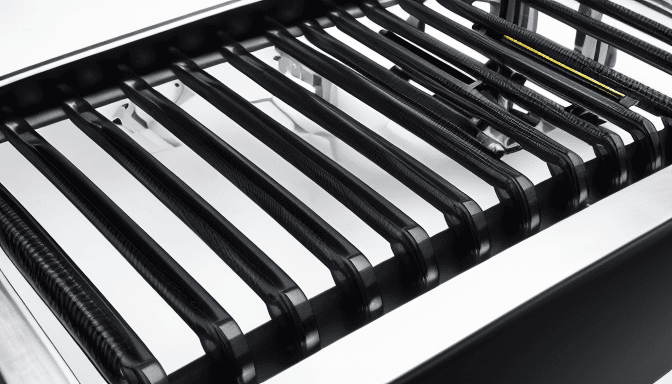
Transmission Coolers, Fluid, and Valve Body Upgrades
When you’re pushing your 2JZ build to the limits, heat becomes the silent enemy of your transmission. Think of the transmission cooler as the unsung hero of your setup—it keeps temperatures in check, preventing the dreaded overheating that can wreck shift quality and, worse, cause permanent damage. Without a proper cooling system, even the toughest transmissions can start slipping or fail prematurely. It’s like trying to run a marathon in a sauna; your transmission simply can’t perform at its best.
Upgrading your transmission cooler isn’t just about adding another part; it’s about improving the **overall health and longevity** of your drivetrain. A high-quality cooler with increased surface area ensures that heat dissipates quickly, especially during those intense track sessions or stop-and-go street driving. Don’t overlook the placement either—mount it where it gets plenty of airflow, like in front of the radiator or AC condenser, to maximize cooling efficiency.
Next up is the fluid. Stock transmission fluid just won’t cut it when you’re running higher horsepower. Specialized synthetic fluids offer better thermal stability and friction characteristics, which means smoother shifts and less wear over time. Imagine switching from regular motor oil to a high-performance racing oil—it’s that big of a difference. Some fluids are even formulated to handle the unique demands of high-stress transmissions, keeping everything running silky smooth even when the heat is on.
Now, let’s talk about the valve body—the brain of your automatic transmission. It controls how and when the gears shift, so upgrading or modifying the valve body can drastically improve shift speed and firmness. For drag racers or spirited street drivers, a valve body upgrade can mean the difference between a sluggish shift and a crisp, lightning-fast gear change. Some valve bodies come with adjustable features, letting you fine-tune shift points to match your power and driving style perfectly.
To sum it up, think of these upgrades as a team working in harmony: the cooler keeps temperatures low, the fluid ensures smooth operation, and the valve body controls the timing and feel of each shift. Neglecting any one of these can lead to a domino effect of issues that compromise your build’s performance and reliability. So, if you want your 2JZ transmission to last and perform like a champ, investing in these upgrades isn’t just smart—it’s essential.
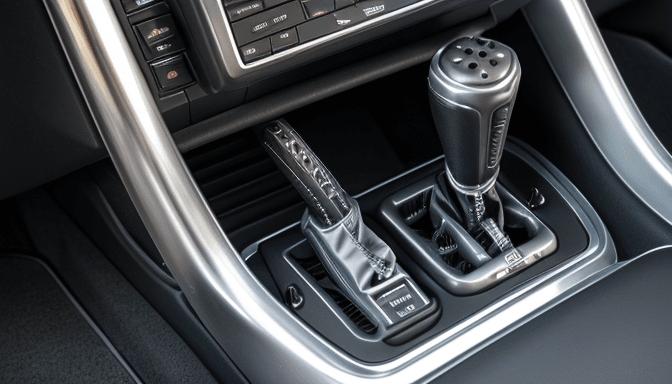
Choosing the Right Gear Ratios for Drivability and Acceleration
When it comes to dialing in your 2JZ transmission, picking the right gear ratios isn’t just a technical detail—it’s the secret sauce that shapes how your ride feels and performs. Imagine gear ratios as the gears on a bike. Too low, and you’re spinning out with little power. Too high, and you’re struggling to get going. The balance you strike affects everything from how quickly you launch off the line to how smooth your highway cruise feels.
Let’s break it down. Shorter gear ratios (lower numbers) mean quicker acceleration. Your car will feel like it’s got a rocket booster when you hit the gas, perfect for drag strips or tight street circuits. But there’s a trade-off: your engine revs higher at cruising speeds, which can make long drives tiring and noisy. On the flip side, taller gear ratios (higher numbers) help your engine breathe easier on the highway, improving fuel economy and reducing wear, but your initial punch off the line won’t be as sharp.
For example, if you’re building a street car that sees daily traffic and occasional spirited drives, you want a setup that’s friendly in stop-and-go traffic but still wakes up when you want to push. A balanced gear ratio setup keeps your shifts crisp and your engine in the sweet spot, avoiding that sluggish feeling when you need power most. Think of it like tuning a guitar: too tight or too loose, and the music just doesn’t flow.
Here’s a quick peek at how gear ratios influence your ride:
| Gear Ratio Type | Acceleration | Top Speed | Fuel Efficiency | Best For |
|---|---|---|---|---|
| Short (Lower Ratio) | Fast | Lower | Lower | Drag Racing, Tight Tracks |
| Tall (Higher Ratio) | Slower | Higher | Better | Highway Cruising, Daily Driving |
But don’t just rely on numbers. Your actual driving style and goals matter more. Are you the type who loves ripping through gears on a twisty road, or do you prefer smooth, relaxed drives with the occasional burst of speed? Also, consider your engine’s power band. The 2JZ loves to rev, so matching gear ratios that keep it in that sweet power zone makes all the difference.
One last tip: sometimes, mixing gear ratios from different transmissions or custom gearing can give you the best of both worlds. It’s like mixing your favorite playlist—sometimes a little variety keeps the ride exciting and perfectly tuned to your vibe.
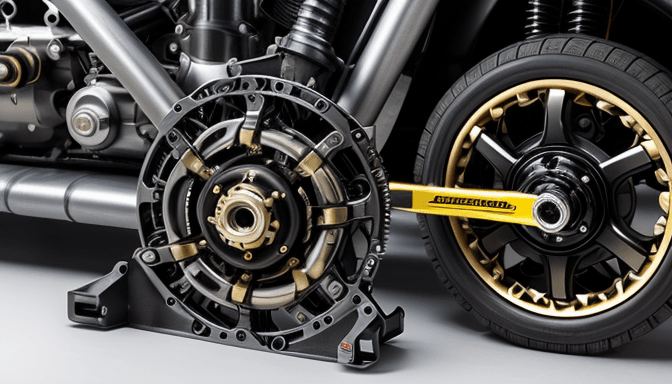
Carbon vs Brass Sync Rings and High-RPM Shifting Mods
When it comes to upgrading your 2JZ transmission for high-RPM performance, the choice between carbon and brass synchronizer rings is more than just a detail—it’s a game of precision and feel. Sync rings are those small but mighty components that help gears mesh smoothly during shifts. If you’ve ever felt that frustrating grind or delay while shifting, your sync rings might be the culprit.
Brass sync rings have been the traditional go-to for decades. They’re reliable, affordable, and offer decent wear resistance. However, when you push your engine to higher RPMs and demand quicker, crisper shifts, brass can start to show its limits. The metal heats up, wears down faster, and sometimes results in a slightly mushy shift feel. It’s like trying to sprint in worn-out shoes—you can do it, but it’s not ideal.
Enter carbon sync rings. These bad boys are designed for the serious enthusiast who wants razor-sharp shifts without hesitation. Carbon rings offer superior heat resistance and maintain their friction properties even under intense conditions. This means faster gear engagement and less wear over time. Imagine sliding on a fresh pair of sneakers that grip perfectly no matter the terrain—that’s the difference carbon makes.
But the upgrade doesn’t stop at sync rings. To truly unlock smooth high-RPM shifting, consider mods like improved shift forks, upgraded detent springs, and even custom valve bodies for automatics. These tweaks reduce shift effort and prevent missed shifts when the engine is screaming. It’s like tuning a musical instrument; every part has to work in harmony for the perfect performance.
| Feature | Brass Sync Rings | Carbon Sync Rings |
|---|---|---|
| Heat Resistance | Moderate | High |
| Shift Feel | Smoother at low RPM | Crisper at high RPM |
| Durability | Good but wears faster under stress | Excellent, lasts longer under aggressive use |
| Cost | Lower | Higher |
In my own build, switching to carbon sync rings was like night and day. Shifts became more confident, and the transmission felt bulletproof even after track days. Sure, the upfront cost was higher, but the payoff in reliability and feel? Absolutely worth it. If you’re serious about pushing your 2JZ to the edge, these upgrades aren’t just nice—they’re necessary.
So, what should you choose? If your build is mild and you’re cruising, brass sync rings will do the job just fine. But if you’re chasing high RPMs and want every shift to be sharp and precise, carbon sync rings combined with other high-RPM mods will keep your transmission happy and your driving experience exhilarating.
Frequently Asked Questions
- What are the best manual transmission options for a 2JZ swap?When it comes to manual transmissions for 2JZ swaps, the R154, T56, and CD009 are the top contenders. The R154 is known for its strength and OEM compatibility, making it a solid choice for street builds. The T56 offers a robust design and smooth shifting, ideal for high-power applications. Meanwhile, the CD009 is popular for its lightweight and close gear ratios, perfect for aggressive driving and track use. Your choice depends on your power goals and driving style.
- Should I choose automatic or manual transmission for my 2JZ build?This really boils down to your personal preference and how you plan to use your car. Manual transmissions give you direct control and a more engaging driving experience, which many enthusiasts love. Automatics, especially modern units like the ZF 8HP, offer quick, smooth shifts and can handle high power with ease, making them great for both street and track. Consider your comfort behind the wheel and performance needs before deciding.
- Why upgrade to a TH400 or Powerglide for drag racing 2JZ builds?TH400 and Powerglide transmissions are drag racing legends because they can handle insane horsepower and torque without breaking a sweat. Their simple, rugged design means fewer parts to fail, and they offer lightning-fast shifts that can shave precious milliseconds off your quarter-mile time. If you’re chasing drag strip glory, these transmissions are a no-brainer.
- How important are clutch kits and flywheels for high horsepower 2JZ setups?Upgrading your clutch kit and flywheel is crucial when you’re pushing serious power. Stock components might slip or fail under high torque, ruining your fun and wallet. A high-performance clutch kit ensures smooth engagement and durability, while lightweight flywheels improve throttle response and engine revving. Think of them as the handshake between your engine and transmission—make it firm and reliable!
- What should I consider regarding driveshaft and mounts during a 2JZ transmission swap?Driveshaft length and balance are often overlooked but can make or break your drivetrain’s reliability. Using the wrong length can cause vibrations or even damage. Mount compatibility is equally important to prevent misalignment and stress on components. Always measure carefully and use quality mounts tailored for your transmission choice to keep everything running smoothly.
- Can transmission coolers and fluid upgrades really improve performance?Absolutely! High-performance transmissions generate a lot of heat, which can lead to premature wear or failure. Adding a transmission cooler helps keep temperatures in check, while specialized fluids reduce friction and improve shift quality. Valve body upgrades can further refine shift timing and firmness, especially under extreme conditions. It’s like giving your transmission a spa day—keeping it fresh and ready to perform.
- How do gear ratios affect drivability and acceleration in a 2JZ transmission?Gear ratios are the secret sauce behind how your car feels on the road or track. Shorter gears offer quicker acceleration but can limit top speed, while taller gears improve cruising but may dull throttle response. Choosing the right ratios is like tuning a musical instrument—get it right, and your car sings perfectly to your driving style and goals.
- What’s the difference between carbon and brass sync rings for 2JZ transmissions?Carbon sync rings are known for their durability and improved shift feel at high RPMs, making them ideal for aggressive driving and racing. Brass sync rings are traditional and offer smooth engagement but can wear out faster under extreme conditions. Upgrading to carbon sync rings is like swapping your sneakers for racing shoes—better grip and performance when it counts.